Dental prosthetics – basic information

Crown on filed DOWN tooth
Contemporary dental prosthetics, also known as prosthodontics, is concerned above all with improving the appearance of the patient’s smile and restoring their comfort and joy for life. This is the field of dentistry responsible for recreating or creating new tooth functions. Damaged, incomplete or unsightly teeth can have serious consequences for health, well-being and self-confidence. A beautiful smile is the best showcase of every human being, and the dental prosthetist helps to achieve it.
Prosthetic treatment consists of several stages, the most important of which is full diagnostics to determine the patient’s expectations. Based on experience, the latest diagnostic equipment and global trends in the field of dental prosthetics, an individual treatment plan is prepared which contains guidelines for preparatory treatments for prosthetic treatment on teeth or implants.
Indications for treatment:
- one missing tooth
- several missing teeth
- complete toothlessness
- unsatisfactory appearance of teeth
Dental prosthetics – applied solutions
The most important element in dental prosthetics is passion, while a combination of art, knowledge, experience and technology guarantees the most beautiful results. Cichoń Dental Centre performs prosthetic work in cooperation with renowned laboratories, which are guarantors of the highest quality and excellent form, whether of veneers, crowns, bridges or prostheses.
Dental veneers
Dental veneers are non-invasive thin prosthetic shells that give the teeth the desired shape and colour. Veneers made of porcelain provide particularly high aesthetic standards and durability, but Cichoń Dental Centre also offers composite and feldspathic veneers.
These can be applied using a method that involves either no or limited filing. Generally, using a veneer is the least invasive way to correct the colour and shape of teeth.
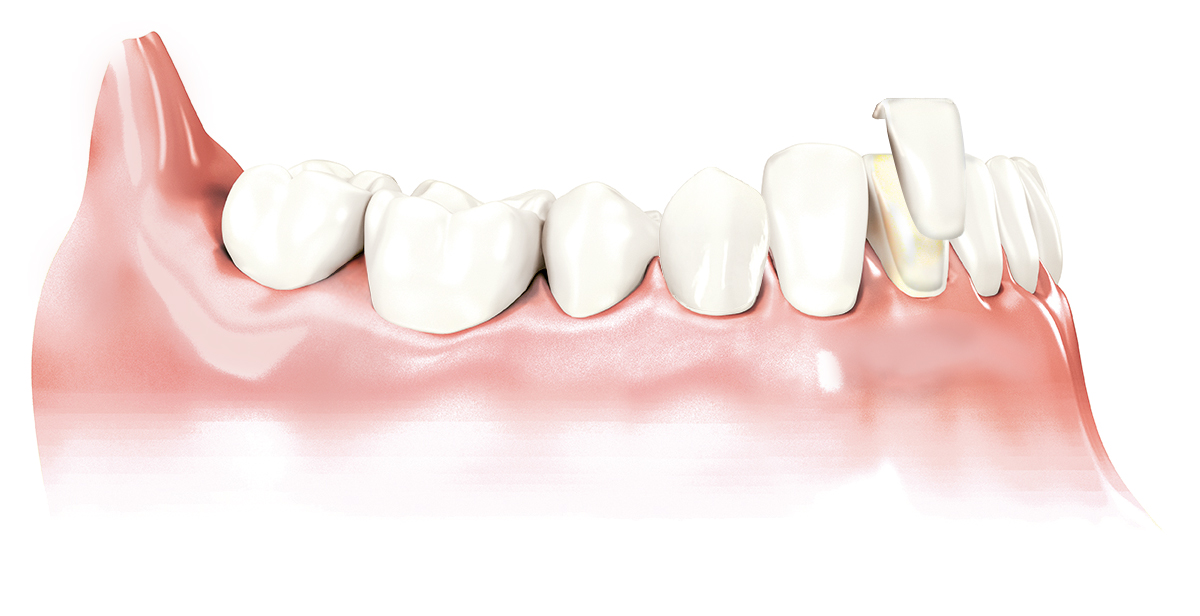
A veneer on A tooth
Dental prosthetics – crowns
A crown is a permanent prosthetic restoration that covers the whole tooth surface. Thanks to crowns, it is possible to restore the correct shape and colour of the tooth and make small corrections to its setting in the arch, restoring its beautiful appearance.
Crowns are used when a tooth:
- is significantly damaged by caries;
- has numerous fillings;
- is broken;
- is damaged by age-worn abrasion;
- is discoloured after root canal treatment.
It is a solution for a situation where the natural crown of a tooth can no longer be properly reconstructed with a composite material.
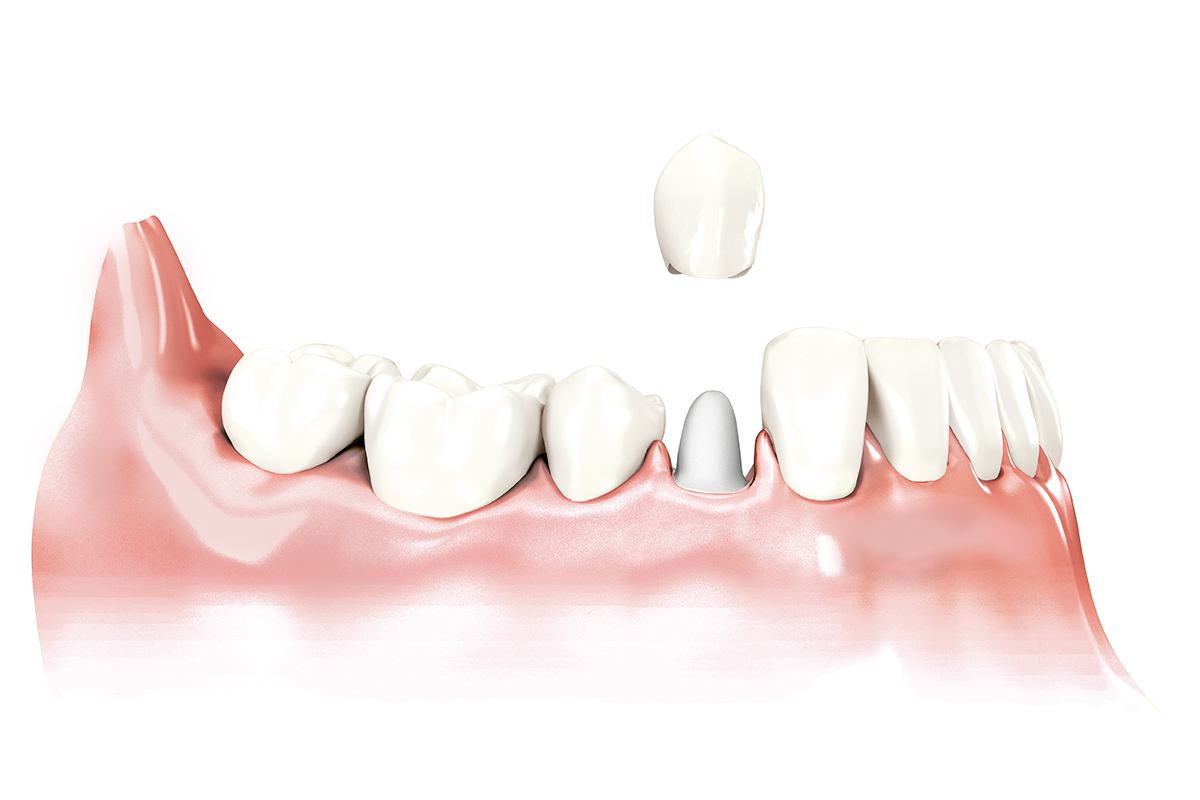
Crown on a Filed down tooth
In order to use a prosthetic crown it is necessary to prepare a damaged tooth by reducing its size (known as tooth filing). The pillar created by this process forms the basis for attaching the crown. In cases where the pillar is weak, because the tooth has been significantly damaged, a reinforcing crown-root insert is used, e.g. one made of fibreglass.
Dental prosthetics – bridges
A bridge is a permanent prosthetic restoration that makes it possible to reconstruct up to 3 neighbouring cavities. It is made up of a block of crowns that fill the gap, combined with crowns on the adjacent teeth (so called pillars of the bridge). Preparation for applying a bridge is similar to that for crowns, i.e., it requires the development of pillars under the bridges.
According to international standards, in cases where there are healthy teeth next to the gap, it is recommended to replace the missing teeth with the help of intraosseous implants – implants and implant-supported prosthetics.
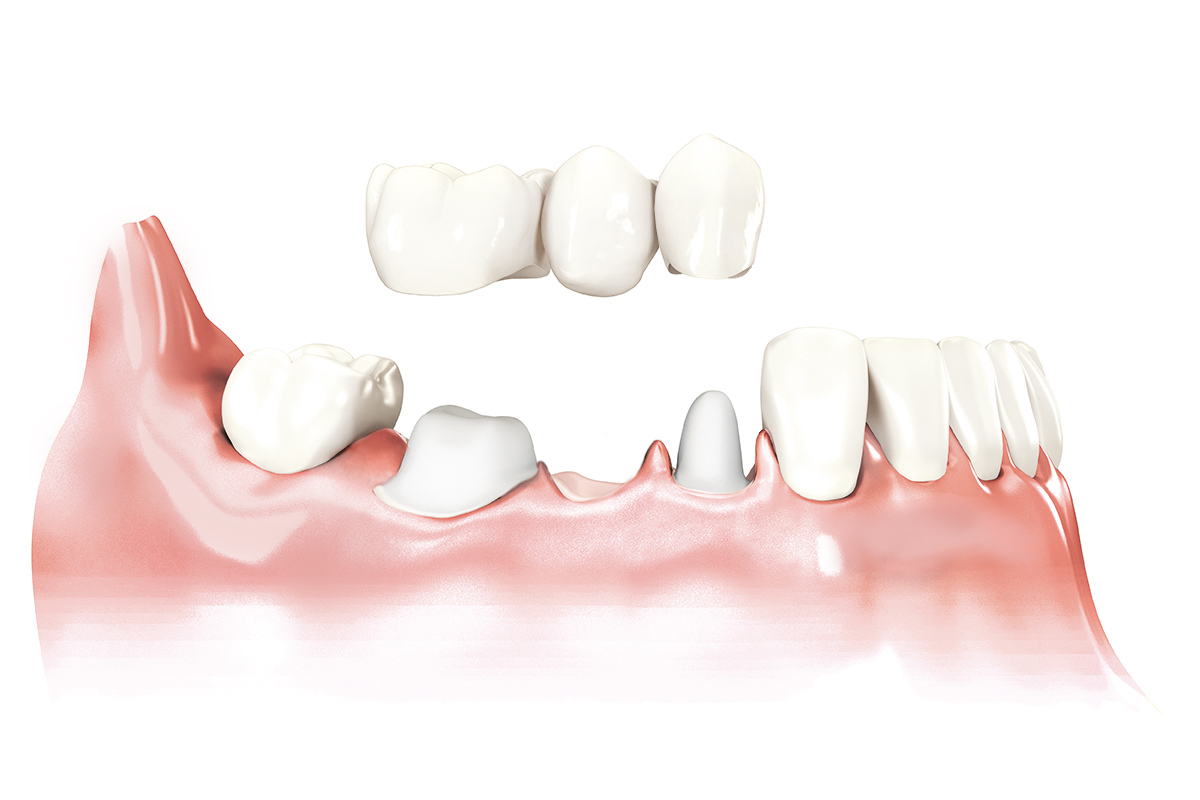
A THREE-UNIT BRIDGE ON A patient’s own filed down teeth
Dental prosthetics – removable dental prosthesis
A dental prosthesis is a prosthetic restoration that can be used in cases of multiple dental defects or complete toothlessness. It restores lost oral functions.
These include:
- a removable dental prosthesis based on the patient’s own teeth – removable by the patient (acrylic dentures, chrome dentures, snap-on dentures, flexible dentures, telescopic denture, attachment retained removable denture)
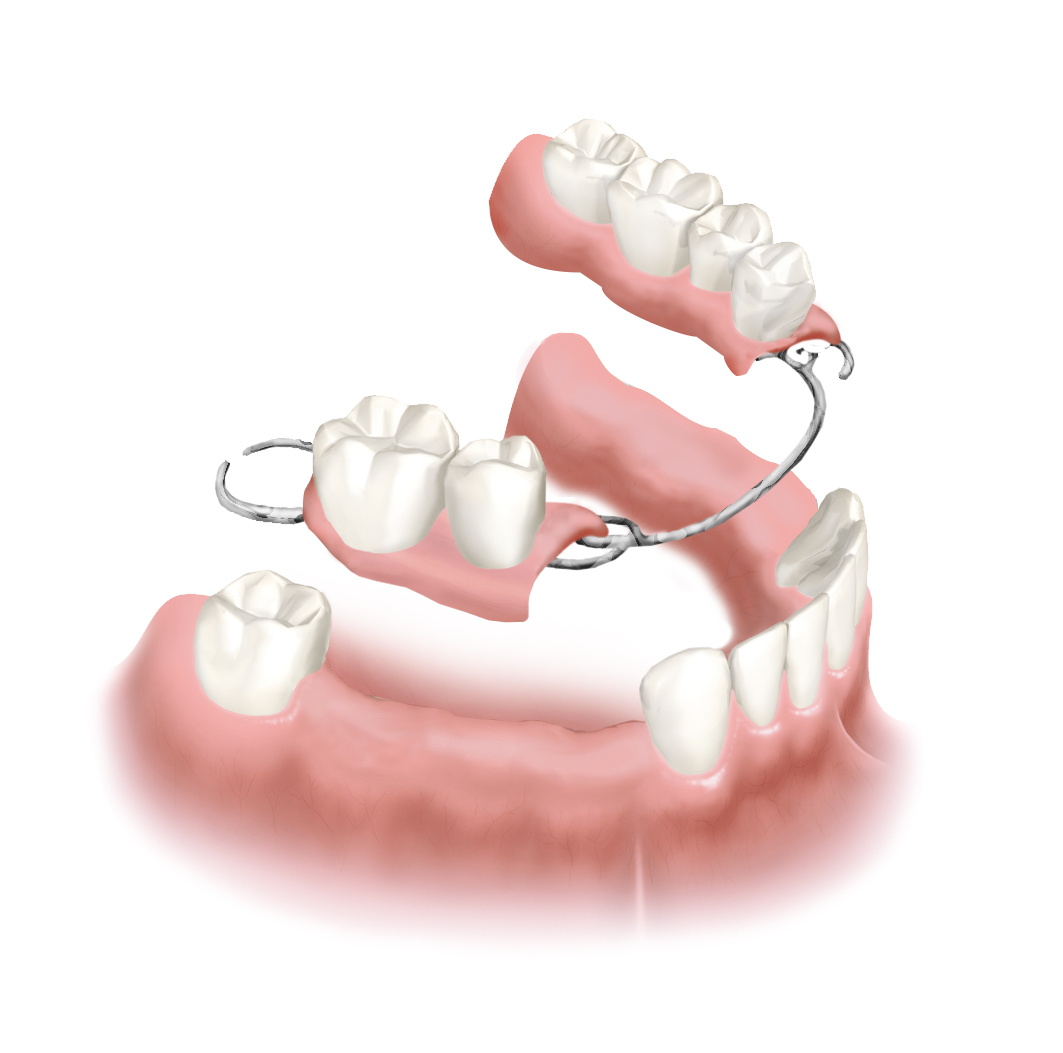
REMOVEABLE partial prosthesis
- completely removable prosthesis (used in cases of toothlessness)
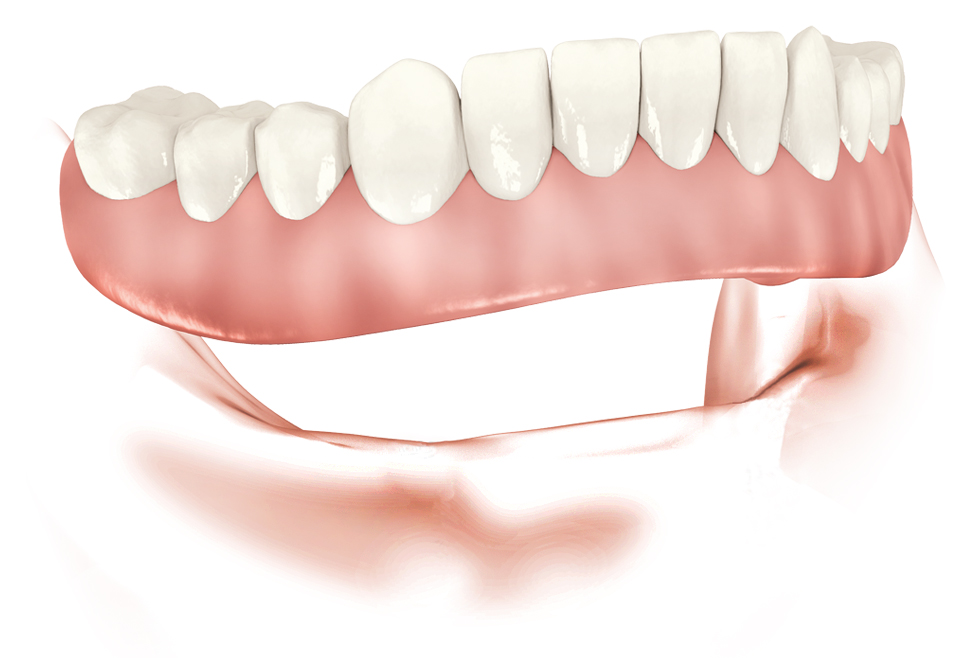
REMOVEABLE COMPLETE PROSTHESIS ON GUm
It should be borne in mind that wearing a removable prosthesis can result in loss of bone surface. An alternative solution to traditional dental prostheses is the use of special implant-based prostheses on implants. For patients who do not have their natural teeth, after inserting implants, an individually tailored, comfortable and natural prosthesis is created to eliminate shifting, loss and atrophy of bone. Learn more…
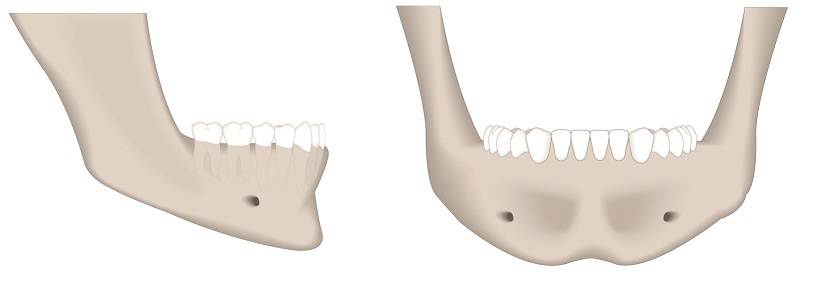
THE ORIGINAL BONE STATE
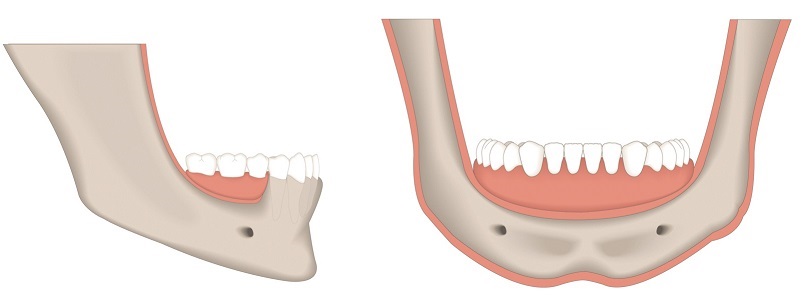
PROgressive BONE LOSS AS THE RESULT OF WEARING REMOVABLE PROSTHESES
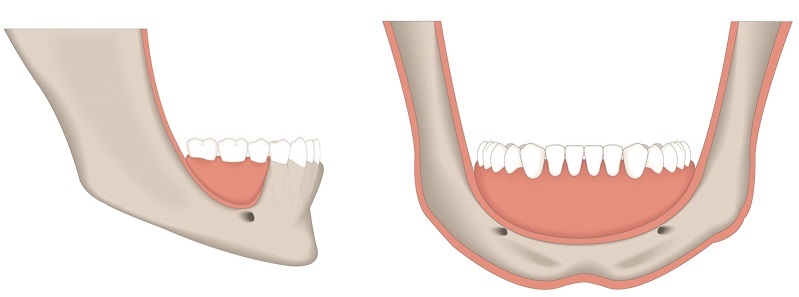
bONE LOSS AS THE RESULT OF MANY YEARS OF WEARING REMOVABLE PROTHESIS
Types of dental prosthetic material
Nowadays, patients are not only interested in dental prosthetics for functional reasons, but also for aesthetic ones. During the consultation, the doctor presents and explains possible solutions (or a single solution), while the choice of treatment plan remains up to the patient.
In the front sections, it is advisable to use all-ceramic, non-metallic crowns, which perfectly imitate the natural appearance of teeth. They are made of zirconium or ceramics.
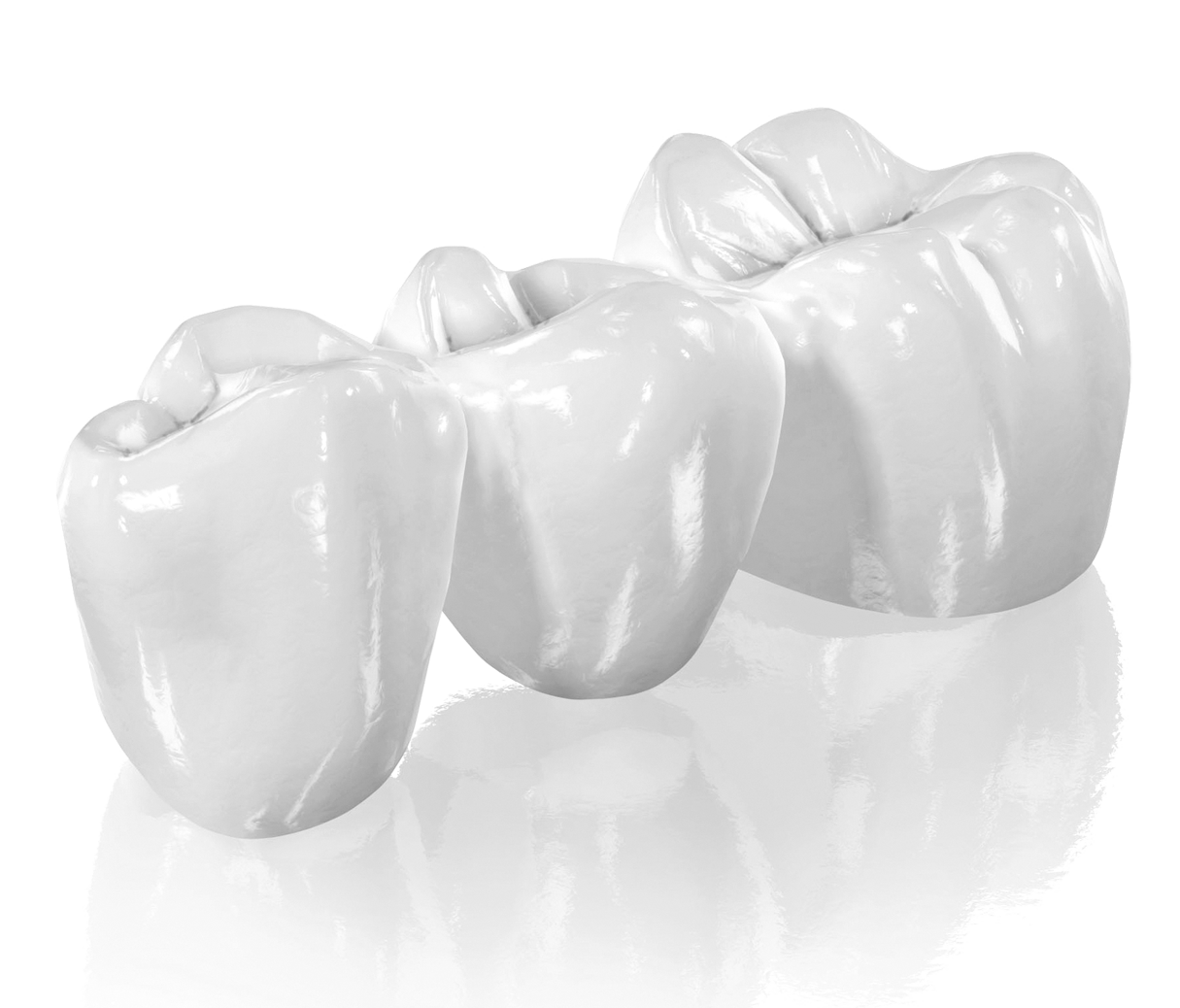
ALL-ceramic three-unit bridge
Dental prosthetics – crowns, veneers, all-ceramic bridges
Crowns and bridges made of zirconium oxide have the advantage of both durability and aesthetics. It is the material most similar to natural teeth: it has a similar colour and reflects light in a similar way. It is worth noting that zirconium oxide is completely safe for the body (biocompatible), which means that it does not cause hypersensitivity, which may occur when metal is used. Due to their aesthetic and natural appearance, they are preferred in the case of restorations of both the front and lateral teeth.
Due to their biocompatibility, high aesthetic qualities and the fact that they are the most durable of all dental ceramics, all-ceramic crowns based on zirconium oxide are a perfect solution for demanding patients. They constitute an alternative to a traditional metal alloy foundation even for filling gaps in the lateral sections of the dental arch. Zirconium oxide can be used in situations where high strength is required, for example in multi-unit bridges.
Dental prosthetics – crowns, veneers, all-ceramic bridges
Prostheses made using the ceramic system work perfectly for dental veneers, reconstructing a single crown or three-unit bridges. The innovative system guarantees high strength restorations with a stunning appearance (the most aesthetic ceramics in the world). Recommended especially in the anterior teeth.
Ceramic crowns are made of glass ceramics, reinforced with lithium disilicate. The bending strength of this type of ceramic is five times higher than that of feldspathic ceramics and it equals 350 Mpa (5.6) on average. It is an ideal aesthetic solution for restoring individual teeth (inlay, onlay, overlay, veneer, prosthetic crown) as well as short, three-unit bridges (except molars). Thanks to its high strength, this ceramic allows the use of the thinnest dental veneers that do not require filing.
The innovative system guarantees restorations with both a stunning appearance (the most aesthetic ceramics in the world) and strong resistance.
Dental prosthetics – metal-ceramic crowns and bridges
One alternative to all-ceramic crowns and bridges is prosthetic work on a metal foundation. Before deciding it is worth knowing that one downside of traditional metal-based crowns is the appearance of a grey line in the area where the crown meets the gum. They may also cause hypersensitivity in those who are allergic to metal. However, this group of crowns is also used in everyday practice.
Frequently asked questions
How is a veneer different from a crown?
The main difference between a veneer and a crown is size. A veneer is a thin pad that is placed on the outer surface of the tooth. The crown is thicker, and requires the preparation of a larger amount of tooth on its entire surface. It is also worth noting that dental veneers are usually used for healthy teeth, to improve their aesthetic qualities. A crown often complements major deficiencies of the tooth’s own tissue. Most often, the doctor decides which solution is more beneficial to the patient.
I do not like the shape of my teeth. What can be done about this?
One solution is the use of correction treatment, involving improving the shape of the teeth by filing them down with a diamond burs, an eraser and abrasive material. This method is called contouring and is completely safe: the patient need not fear damage to the teeth. An alternative solution may be to apply crowns or dental veneers.
How does one take care for the hygiene of prosthetic restorations – crowns, bridges and works on implants?
It is recommended to perform oral cavity hygiene at least once every six months. Professional oral hygiene is performed with the help of special tips that allow you to safely and thoroughly clean the area of prosthetic elements. In addition, low granularity and mildly abrasive sand is used, which protects the crowns from damage.











